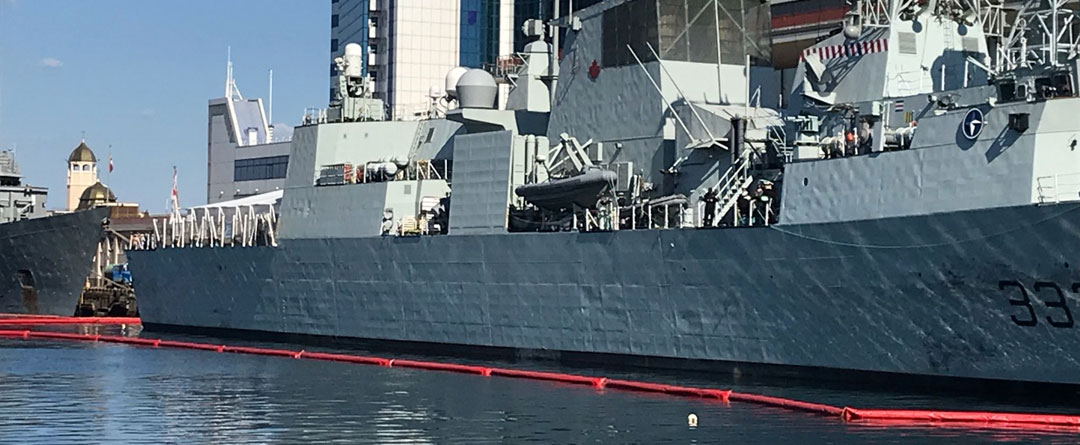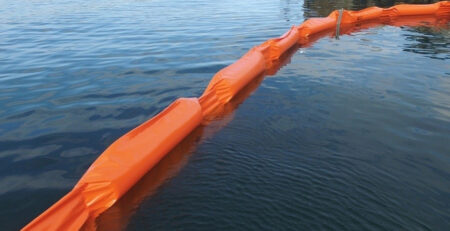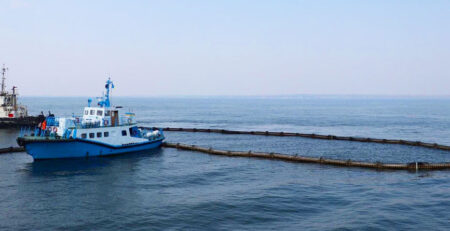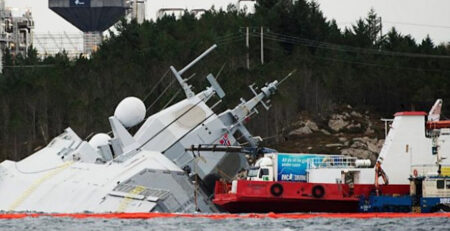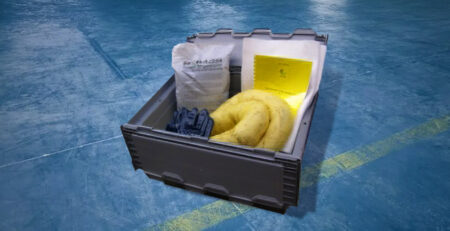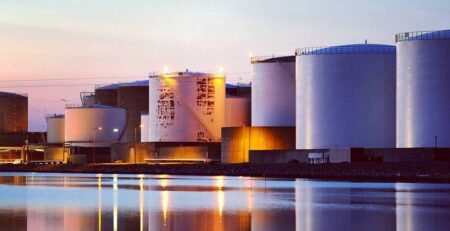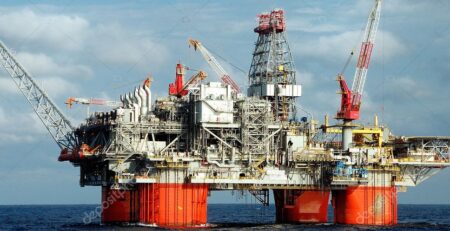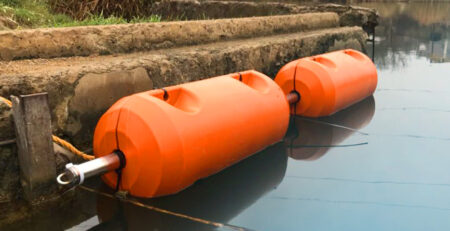The Essential Guide to Inflatable Oil Booms
Oil spills pose an immediate and devastating threat to marine, coastal, and industrial environments. The ecological damage, economic losses, and long-term consequences of untreated spills are immense, underscoring the urgent need for swift and effective response. In this critical context, inflatable oil booms stand out as a crucial innovation in modern spill containment, offering a flexible, highly effective, and easily deployable solution. For a broader understanding of how these barriers function in overall spill management, it’s helpful to understand the role of oil containment booms in environmental protection. This guide will explore why these specialized booms are essential for rapid deployment, efficient containment, and minimizing the adverse consequences of oil spills for businesses engaged in maritime or industrial operations.
What Exactly Are Inflatable Oil Booms? Understanding Their Design and Function
Inflatable oil booms are specialized, flexible, and buoyant barriers designed to contain and divert oil spills on various water surfaces. Typically crafted from durable, oil-resistant materials such as PVC, Hypalon, or Urethane, these booms create a physical barrier that prevents oil from spreading further.
Their unique construction leverages an air-filled containment boom mechanism. Internal air chambers or bladders are rapidly inflated to create a stable, floating barrier. This design allows for compact storage when deflated, significantly reducing the space required for transport and warehousing. Once inflated, the substantial buoyancy ensures the boom floats effectively, even in challenging conditions.
Each boom features a freeboard, the part that extends above the water surface, designed to prevent oil from splashing over in choppy conditions. Below the waterline, a skirt extends downwards, acting as a crucial barrier to prevent oil from escaping underneath the boom. For a deeper understanding of boom construction, operational benefits, and various types of air-filled containment systems, reputable industry guidelines provide comprehensive insights. Compared to traditional solid floatation booms or fence-type booms, the inflatable design offers superior portability and ease of deployment, making them a preferred choice for modern spill response.
The Power of Speed: Why Rapid Deployment Oil Booms Are Non-Negotiable
The core problem with oil spills is their tendency to spread quickly across water, increasing the affected area and making cleanup efforts exponentially more difficult and costly. Timeliness is paramount in mitigation efforts to protect fragile ecosystems and vital infrastructure. Every minute counts when an accidental discharge occurs.
This is where the rapid deployment oil boom feature becomes critical. These booms are engineered for quick inflation, assembly, and positioning, significantly reducing the time from spill detection to effective containment. This speed is vital for minimizing environmental damage, safeguarding aquatic life, and drastically cutting subsequent cleanup expenses. Their indispensable role is evident in critical situations, such as accidental spills from vessels, pipelines, or industrial facilities, ensuring immediate action to limit spread.
Rapid deployment oil booms are crucial for containing spills close to sensitive ecosystems, shorelines, or densely trafficked marine areas. By acting fast, they prevent the oil from dispersing widely or impacting vulnerable resources like mangrove forests, coral reefs, or bird habitats. The ability to quickly isolate a spill zone with inflatable oil booms is often the deciding factor in successful mitigation.
Key Features & Benefits: The Advantage of Portable Oil Spill Booms
The characteristics of a portable oil spill boom are central to its effectiveness. These booms feature a lightweight design, making them easy to handle by smaller crews, reducing the need for extensive personnel. When deflated, they can be compactly stored, requiring minimal warehouse space compared to rigid systems. This design also facilitates easy transport, often fitting into standard vehicles or small vessels, making them ideal for reaching remote or hard-to-access spill locations quickly.
The advantages stemming from their air-filled containment boom nature are numerous:
- Quick and easy inflation/deflation: Specialized blowers or air pumps rapidly inflate the boom, preparing it for deployment in minutes. After use, deflation is equally swift, allowing for efficient packing and streamlining overall operations.
- Reduced logistical challenges and manpower requirements: Their inherent portability and ease of setup mean fewer personnel and less specialized equipment are needed. This significantly lowers operational costs and increases response efficiency during high-stress situations.
- Versatility in various environments: Thanks to their flexible design, these booms are highly adaptable. They can be deployed effectively in diverse conditions, from calm rivers and sheltered harbors to open seas with moderate wave action, offering reliable containment across different water bodies.
- Durability and reusability for long-term value: Constructed from robust materials like PVC or Urethane, inflatable oil booms are designed to resist oil, chemicals, UV radiation, and physical wear. This ensures a long service life and delivers cost-effectiveness over multiple deployments, providing excellent return on investment.
Typical components of these booms include universal connectors for linking multiple sections into longer barriers, internal ballast systems for stability in currents, and readily accessible anchor points for secure positioning. These features contribute to the overall reliability and performance of inflatable oil booms.
Applications: Where Inflatable Oil Booms Make a Difference
Inflatable oil booms are versatile tools with a wide range of critical applications in both reactive and proactive spill management:
- Emergency spill response: These booms are indispensable for the immediate containment of unexpected spills from sources like tankers, barges, offshore drilling operations, or damaged pipelines. Their rapid deployment minimizes the environmental impact by limiting the spread of hydrocarbons.
- Marine operations: In ports, harbors, shipyards, and around offshore platforms, they are used for proactive protection. This includes deployment during bunkering operations, fuel transfers, or maintenance activities involving hazardous liquids, preventing spills from reaching open water.
- Industrial facilities: Land-based industries situated near waterways, such as power plants, refineries, or manufacturing plants, utilize inflatable booms to contain potential discharges from operations or accidents, safeguarding adjacent aquatic environments.
- Environmental protection and containment during maintenance operations: They are crucial for protecting sensitive ecological areas like mangroves, wetlands, or wildlife habitats. Furthermore, they can create temporary containment zones during dredging, construction, or remediation projects to prevent disturbance and spread of contaminants.
- Preventative measures: Many organizations pre-emptively deploy inflatable booms around high-risk vessels or operations as a precautionary measure, ensuring any minor leak or spill is immediately contained before it becomes a widespread environmental issue.
Choosing the Right Inflatable Oil Boom for Your Business Needs
Selecting the most appropriate inflatable oil booms is crucial for effective spill response. Commercial buyers should consider several practical factors:
- Material type and resistance to oil/chemicals: Evaluate materials like PVC, Hypalon, or Urethane based on their superior resistance to specific hydrocarbons, UV radiation, and harsh marine environments. The choice should align with the type of oil or chemicals likely to be spilled.
- Size and buoyancy requirements: Boom height (freeboard) and skirt depth (draft), along with overall buoyancy, must be matched to potential spill volume, water depth, and anticipated wave and current conditions for effective containment.
- Ease of cleaning and maintenance: Features that allow for quick and thorough cleaning post-deployment are vital. This ensures the boom’s longevity and readiness for future use, significantly reducing operational downtime and extending its service life.
- Compatibility with existing equipment: Consider how the new boom integrates with your current storage, deployment, and retrieval systems. This includes ensuring compatible connectors and inflation equipment for seamless and efficient operation.
- Compliance with industry standards and regulations: Adherence to national and international standards (e.g., ASTM F625 for boom performance, F962 for boom connectors) is paramount. This guarantees reliability, interoperability with other equipment, and legal compliance.
- Storage and transport logistics: Reiterate the importance of a compact and portable oil spill boom design. This facilitates easy storage in limited spaces and enables rapid transport to the spill site, minimizing crucial response time during an emergency.
Safeguarding Our Waters with Advanced Containment Solutions
Inflatable oil booms are truly a cornerstone of modern environmental protection, representing highly effective, efficient, and versatile solutions for oil spill containment and mitigation. Their innovative design ensures both rapid deployment and robust performance, making them an indispensable asset for any organization operating in or near water.
Their rapid deployment oil boom capabilities and classification as a portable oil spill boom provide unparalleled peace of mind and operational readiness. By limiting the spread of spills, these advanced containment solutions protect precious ecosystems, reduce cleanup costs, and minimize long-term environmental damage. Investing in state-of-the-art containment solutions like inflatable oil booms is a vital step for safeguarding aquatic environments and ensuring business continuity for small and medium-sized businesses.

